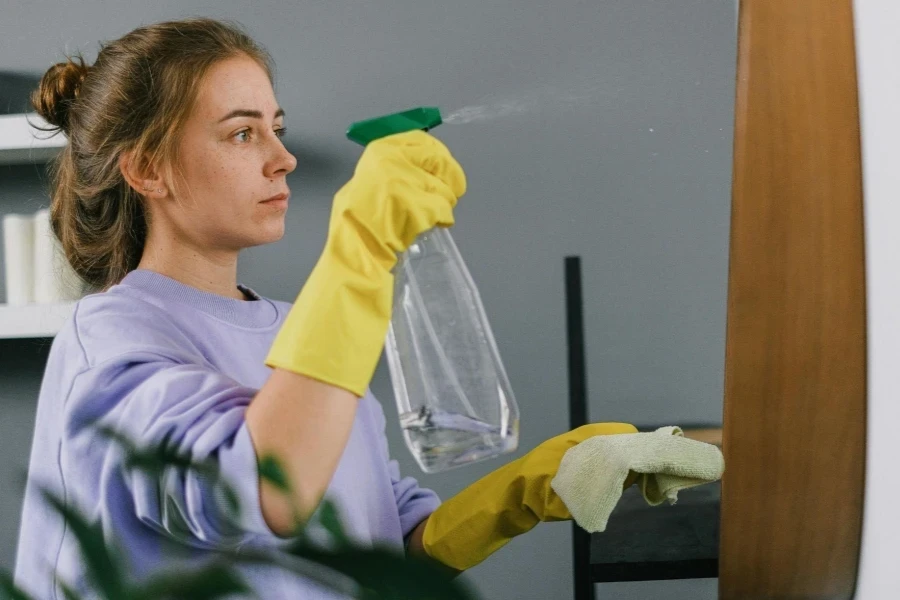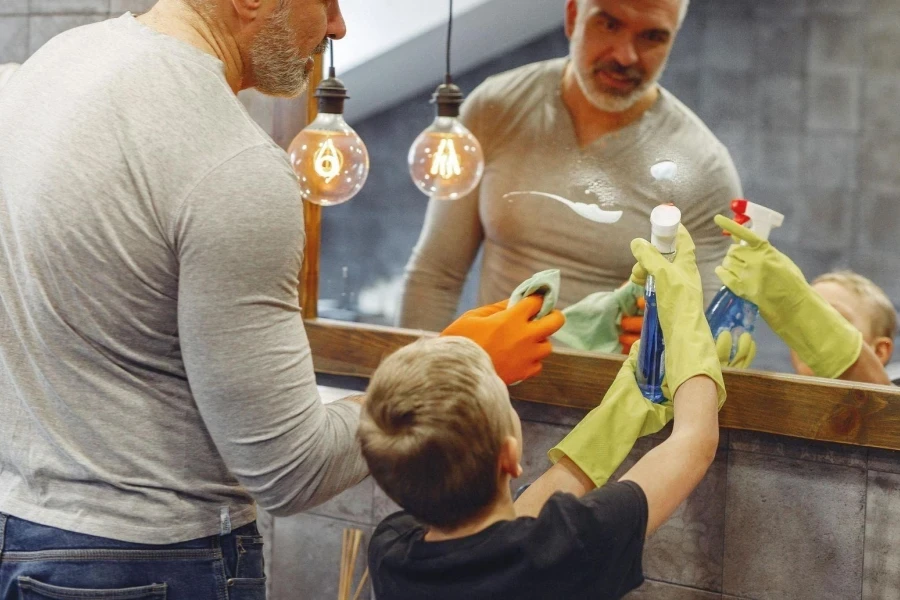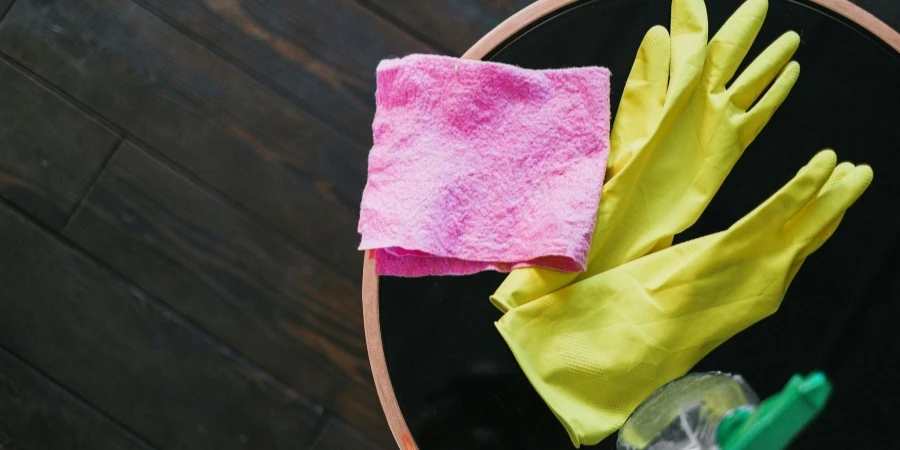Table of Contents
● Introduction
● Understanding the different types and uses of household gloves
● Market trends and insights for household gloves for 2025
● Essential factors to consider when choosing household gloves
● Leading household gloves for 2025 and their standout features
● Conclusion
Introduction
Household gloves are essential tools in a wide range of domestic and professional settings, offering crucial protection for hands against harsh chemicals, hot water, and abrasive surfaces. As the market continues to expand and evolve, the variety of materials, designs, and specialized features available has grown significantly. Choosing the right gloves can make everyday tasks safer and more efficient, from washing dishes to handling potentially hazardous materials. As we move into 2025, the diversity in options reflects a growing demand for comfort, durability, and versatility, making it more important than ever to select products that meet specific needs and preferences effectively.
Understanding the different types and uses of household gloves

Material variations: Latex, PVC, and nitrile
In 2025, household gloves will primarily be made from latex, PVC, and nitrile, each offering unique benefits based on usage. Latex gloves are favored for their elasticity, comfort, and dexterity, making them ideal for tasks like dishwashing, though latex allergies are leading to alternatives. PVC gloves, a latex-free option, offer good waterproofing and affordability, often used in food handling and light cleaning, though they lack durability. Nitrile gloves are popular for their resistance to chemicals, oils, and punctures, making them the go-to choice for heavy-duty or industrial tasks, combining durability with allergy safety.
The significance of lining and sleeve length
Lining and sleeve length significantly impact glove comfort and effectiveness. Linings, like cotton or fleece, provide comfort during long wear, prevent skin irritation, and absorb sweat, essential for tasks involving hot water or chemicals. Longer sleeves offer extra protection against splashes and spills, making them crucial for deep cleaning or chemical handling, while shorter sleeves offer more flexibility for quick tasks. Choosing the right combination of lining and sleeve length ensures safety and comfort, depending on the task’s requirements.
Specific uses: From dishwashing to chemical handling
Household gloves are tailored for various tasks. Latex or nitrile gloves with linings are ideal for dishwashing, providing protection from hot water and detergents, while anti-slip grips prevent accidents. For industrial tasks or chemical handling, nitrile gloves offer superior resistance to punctures and hazardous substances, ensuring durability and safety. PVC gloves, more flexible and cost-effective, work well for light cleaning or food handling, though nitrile or latex might be better suited for more demanding tasks. Selecting gloves with the right material and features enhances both safety and efficiency.
Market trends and insights for household gloves for 2025

Growing demand for latex-free options:
The demand for latex-free gloves is rising in 2025, driven by growing awareness of latex allergies. Alternatives like nitrile and PVC gloves, which offer durability and chemical resistance without the risks of latex, are becoming popular for tasks ranging from dishwashing to handling harsh cleaning agents. Advances in material science have also improved the elasticity and sensitivity of latex-free gloves, making them a preferred choice for both everyday use and in industries where latex was traditionally dominant.
Impact of sustainability and eco-friendly materials:
Sustainability is a key trend in the household gloves market, with increased interest in biodegradable and eco-friendly materials to reduce environmental impact. Manufacturers are developing gloves from natural rubber and bio-based polymers that decompose more quickly, addressing concerns over waste from disposable gloves. Efforts to use recycled materials and produce biodegradable options align with consumer demand and industry goals for environmental responsibility, leading to greater innovation in sustainable glove production.
The rise of multifunctional gloves for versatile household tasks:
Multifunctional gloves are gaining popularity as consumers seek versatile products that can handle various tasks, from basic cleaning to more specialized jobs like gardening or chemical handling. These gloves combine features such as enhanced grip, chemical resistance, and extended sleeve lengths, making them practical for a wide range of uses. This trend reflects consumer demand for convenience and efficiency, offering a cost-effective solution for both personal and business use.
Essential factors to consider when choosing household gloves

Comfort and fit are essential for household gloves as they impact the wearer’s efficiency and safety. Poorly fitted gloves can lead to discomfort, restricted movement, and increased risk of accidents, while a well-fitted glove enhances dexterity and reduces fatigue. The interior lining, like cotton, can improve comfort by reducing friction and irritation during extended use.
Durability and protection balance the need for thickness and flexibility. Thicker gloves provide better protection against chemicals and cuts but may limit flexibility. Finding the right material, such as nitrile for chemical resistance or latex for better tactile sensitivity, ensures the right balance for specific tasks, whether heavy-duty or everyday use.
Grip and anti-slip features are crucial for safe handling of wet or slippery items. Textured surfaces or anti-slip coatings improve traction, making tasks like washing dishes or handling delicate items safer and more efficient. The choice of material, like nitrile or PVC, further enhances grip, ensuring secure handling across various household tasks.
Leading household gloves for 2025 and their standout features

Top-rated gloves for everyday cleaning tasks:
For everyday cleaning in 2025, latex and nitrile gloves are top choices due to their flexibility and resistance to common household chemicals. These materials ensure the gloves can handle everything from mild detergents to abrasive cleaners without compromising durability. Many top-rated gloves also feature soft cotton linings that enhance comfort by absorbing moisture, preventing slippage inside the gloves. Textured surfaces on fingers and palms improve grip, crucial when handling wet or slippery items like dishes or glassware.
Additionally, extended cuff lengths provide extra protection by preventing water from dripping down the arms, making these gloves versatile for a range of household tasks. This combination of comfort, durability, and practicality makes them an ideal choice for everyday use, from dishwashing to cleaning windows and wiping surfaces.
Best options for heavy-duty use:
For heavy-duty tasks, gloves made from thicker materials like nitrile or neoprene are best due to their superior resistance to punctures, chemicals, and abrasions. These gloves often feature reinforced designs with multiple layers for added protection, allowing flexibility and dexterity despite their thickness. They are ideal for tasks involving harsh chemicals, rough surfaces, or handling heavy tools.
Heavy-duty gloves also come with extended sleeves for added forearm protection during tasks like submerging hands in liquids. Anti-slip surfaces ensure a secure grip in wet or greasy conditions, making them robust, long-lasting, and essential for demanding tasks where maximum durability and safety are required.
Innovative designs and their unique benefits:
Innovative glove designs in 2025 cater to modern consumer needs, with multifunctional features like chemical resistance combined with touchscreen compatibility. This allows users to operate electronic devices without removing gloves, perfect for environments like labs or extensive cleaning. Additionally, eco-friendly gloves made from biodegradable materials offer the same protection while reducing environmental impact, appealing to consumers focused on sustainability.
Ergonomic designs are also trending, tailored to fit the hand’s natural contours and reduce fatigue during prolonged use, which is beneficial for repetitive tasks like scrubbing. These innovations reflect a shift toward gloves that enhance user comfort and functionality while being environmentally responsible.
Conclusion

Selecting the best household gloves for 2025 requires a careful balance of comfort, durability, and functionality, tailored to specific tasks. The evolving market offers a range of options from latex-free materials to eco-friendly designs, ensuring that every need is met with precision. Whether for everyday cleaning or heavy-duty use, the right gloves enhance safety and efficiency, making them indispensable tools in both domestic and professional settings. By staying informed on the latest trends and innovations, businesses can confidently choose gloves that provide superior protection and value in a rapidly changing landscape.




